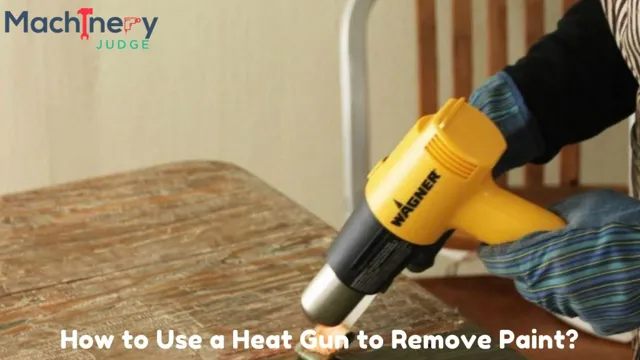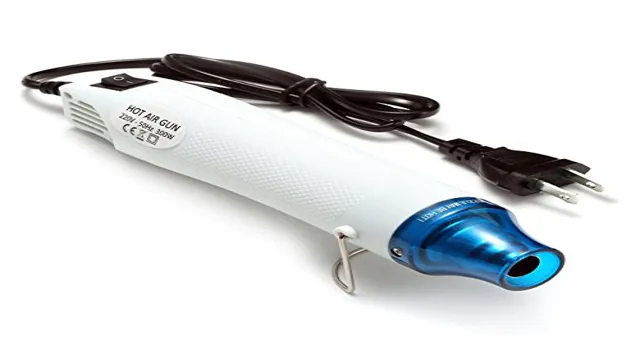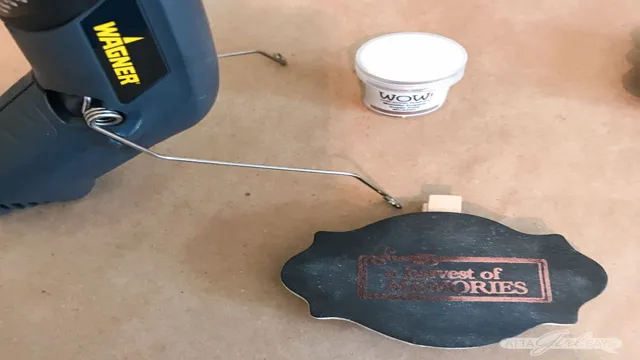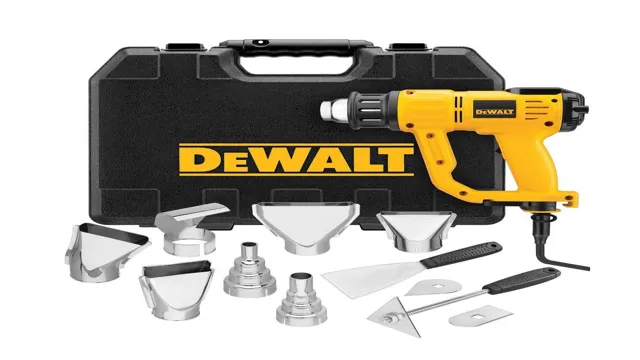Do You Need a Heat Gun for Acrylic Pouring? The Ultimate Guide to Achieving Stunning Results

Have you been bitten by the acrylic pouring bug and wondering if you need to invest in a heat gun? Acrylic pouring is a mesmerizing form of painting that involves pouring a mixture of acrylic paints and mediums onto a canvas, creating a psychedelic piece of art. Heat guns are often used during the drying process to help create unique effects and give the painting a glossy finish. But do you really need one? Let’s explore the pros and cons of using a heat gun for acrylic pouring and see if it’s worth the investment.
Overview of Acrylic Pouring
Acrylic pouring is a popular art form that involves pouring acrylic paint onto a canvas or other surface in a way that allows it to create its own unique patterns and textures. One question that often comes up for beginners is whether or not they need a heat gun for acrylic pouring. While some artists do use heat guns to manipulate the paint and create interesting effects, it is not a necessity in the acrylic pouring process.
In fact, it is possible to create beautiful and unique pieces without the use of any additional tools. However, if you do choose to use a heat gun, it is important to use it carefully and move it evenly across the surface to prevent scorching or other damage. So, the short answer is that no, you do not need a heat gun for acrylic pouring, but it can be a fun addition to your toolkit if you want to experiment with different techniques.
What is Acrylic Pouring?
Acrylic pouring is an art form that involves pouring layers of acrylic paint onto a canvas or other surface. It’s different from traditional painting techniques where the artist uses brushes or other tools to apply paint to the canvas. Acrylic pouring allows for more fluid and spontaneous designs, creating unique and unpredictable results with every pour.
This technique has gained popularity in recent years as it can create stunning, vibrant patterns and textures. The process involves mixing acrylic paint with a pouring medium to achieve the perfect consistency for pouring. The mixture is then poured onto the canvas and manipulated to create different effects.
From tree ring pours and dirty pours to swipe techniques and puddle pours, the possibilities are endless with acrylic pouring. Whether you’re a beginner or an experienced artist, acrylic pouring offers a fun and creative way to express your artistic side.

How is Acrylic Pouring Done?
Acrylic pouring has become a popular form of abstract art in recent years, with its unique and unpredictable results. It involves mixing acrylic paint with various pouring mediums, such as glue or silicone oil, and pouring the mixture onto a canvas or other surface. The mixture is then manipulated by either tilting the surface or using tools like a blowtorch or palette knife to create patterns and textures.
The beauty of acrylic pouring lies in its spontaneity and the element of surprise, as the end result is ultimately determined by the paint’s natural flow and movement. The best part about acrylic pouring is that anyone can do it, regardless of their skill level. So grab some paint and a canvas, and let your creativity run wild with this fun and fascinating art form!
The Role of Heat in Acrylic Pouring
If you have dabbled in acrylic pouring, you may have heard about using a heat gun to help manipulate the flow of the paint. But do you really need one? The short answer is no, a heat gun is not necessary for acrylic pouring. Heat can be used to create interesting effects and adjust the flow of the paint, but it can also be unpredictable and cause unwanted bubbling or cracking.
So, it’s important to use heat with caution and only when necessary. Some artists prefer to work without heat and achieve stunning results through careful color selection and manipulation of the pouring medium. However, if you do choose to experiment with heat, make sure to practice on a smaller scale and use a low setting.
Ultimately, the decision to use heat is up to you and your individual artistic vision.
Why Heat is Used in Acrylic Pouring?
Acrylic pouring is a technique that involves pouring a mixture of acrylic paint, medium, and water onto a canvas or other surface to create a unique and abstract piece of art. One of the essential components of achieving a successful acrylic pour is the use of heat. The heat serves several purposes in acrylic pouring, such as helping to eliminate bubbles in the mixture, causing cells to form, and promoting the flow of the paint.
Heat is also used to create specific effects in the painting, like creating texture or enhancing color vibrancy. There are several methods for applying heat, including using a heat gun or torch, but it’s essential to be careful not to overheat or scorch the painting. Overall, the role of heat in acrylic pouring is crucial to achieving a beautiful and dynamic finished product.
How Heat Helps in Acrylic Pouring?
Acrylic pouring can be a magical and entertaining experience, and heat plays a crucial role in the process. When we speak of heat in acrylic pouring, we are not talking about setting fire to your artwork. Instead, we mean using a heat source like a heat gun or a torch to manipulate the paint, creating unique and intriguing patterns and designs.
The heat helps in achieving an even spread of the paint and accelerates the drying process, which can lead to less cracking or splitting of the paint. Furthermore, heat can also help burst the bubbles formed during the initial mixing of the paint, leading to a smoother surface. It’s important to remember that heat can quickly change the outcome of your acrylic pouring art, so it’s best to experiment and find the right balance.
Alternatives to Heat Guns in Acrylic Pouring?
When it comes to acrylic pouring, heat plays a crucial role in the drying and setting process. It helps to create those intricate designs and patterns that make this art form so popular. However, not everyone has access to a heat gun or wants to use one due to safety concerns.
The good news is, there are alternatives that can achieve similar results. For example, a hairdryer can be used to blow hot air onto the surface to dry the paint quickly and create interesting effects. A propane torch can also be used to create unique patterns by heating the surface of the canvas, but it requires extra caution as it is more intense than a heat gun.
Ultimately, when it comes to acrylic pouring, experimentation is key, and using different tools to achieve various effects can make the process more exciting and fun.
Benefits of Using a Heat Gun in Acrylic Pouring
If you’re new to the world of acrylic pouring, one question you may be asking yourself is whether or not you need a heat gun. While technically you can do acrylic pouring without a heat gun, there are several benefits to using one that you might not want to miss out on. For starters, a heat gun can help eliminate bubbles and give your final piece a smooth, polished finish.
It can also help move the paint around on the canvas, creating interesting patterns and textures. Additionally, using a heat gun can speed up the drying process, meaning you can move on to the next layer or project more quickly. At the end of the day, whether or not you use a heat gun for acrylic pouring is up to you, but for many artists, it’s an important tool that adds depth and character to their work.
How Heat Gun Helps in Acrylic Pouring?
If you’re interested in acrylic pouring, then you already know how thrilling it can be to create a colorful creation by pouring different hues of acrylic paint onto a surface and tilting it around to create interesting patterns. However, a heat gun can take your art to a whole new level. One of the biggest benefits of using a heat gun in acrylic pouring is that it can help enhance the colors and make them more vibrant by removing any air bubbles that may be present in the paint.
Additionally, heat can cause the paint to move around, creating interesting cells and patterns. It’s essential to keep in mind that heat can also cause the acrylic to dry too quickly, which can be tricky to work with. Therefore, it’s necessary to use a heat gun responsibly and experiment with it to find the right balance.
Overall, using a heat gun can be a great tool to bring your acrylic pouring art to the next level and add depth and dimension to your creations.
What Are the Benefits of Using a Heat Gun in Acrylic Pouring?
Acrylic pouring has become a popular art form in recent years, and the use of a heat gun can enhance the process in several ways. One of the main benefits of using a heat gun is that it helps to create more unique patterns and textures in the acrylic paint. Applying heat to the paint can cause it to move and blend in different ways, creating interesting and dynamic looks.
Additionally, using a heat gun can help to speed up the drying process, which can be especially useful if you’re working on multiple pieces at once. However, it’s important to be careful when using a heat gun, as too much heat can cause the paint to crack or bubble. Overall, incorporating a heat gun into your acrylic pouring practice can add a new level of creativity to your work, allowing you to experiment with different techniques and produce stunning results.
Conclusion
In conclusion, while a heat gun can certainly enhance the results of acrylic pouring by helping to create beautiful cell formations and eliminating bubbles, it’s not an absolute necessity. After all, some of the most stunning art comes from breaking the rules and trying new techniques. So whether you decide to invest in a heat gun or take a risk and go without one, remember that the most important thing is to have fun and let your creativity flow!”
FAQs
What is a heat gun used for in acrylic pouring?
A heat gun is used to help remove bubbles and promote movement in the paint during the acrylic pouring process.
Can I use a hair dryer instead of a heat gun for acrylic pouring?
While a hair dryer can be used to remove bubbles in acrylic pouring, it does not generate the same level of concentrated heat as a heat gun, which can result in less effective results.
Is it necessary to use a heat gun for acrylic pouring?
No, it is not necessary, but it can be a helpful tool for achieving desired results in acrylic pouring.
What kind of heat gun is best for acrylic pouring?
A dual temperature heat gun with a low setting is recommended for acrylic pouring, as it allows for more control over the level of heat applied to the paint.
Can a heat gun damage acrylic paint?
Yes, if a heat gun is used improperly and held too close to the paint, it can cause the paint to crack or dry out too quickly. It is important to keep the heat gun at a safe distance and move it around regularly to avoid any damage.
Do I need a heat gun for all types of acrylic pouring techniques?
No, different techniques may require different tools, and a heat gun may not be necessary for all types of acrylic pouring. It really depends on the specific desired outcome.
Are there any safety considerations I should keep in mind when using a heat gun for acrylic pouring?
Yes, it is important to wear protective gloves and goggles, especially when working with high temperature heat guns. It is also important to use the heat gun in a well-ventilated area to avoid inhaling fumes.



